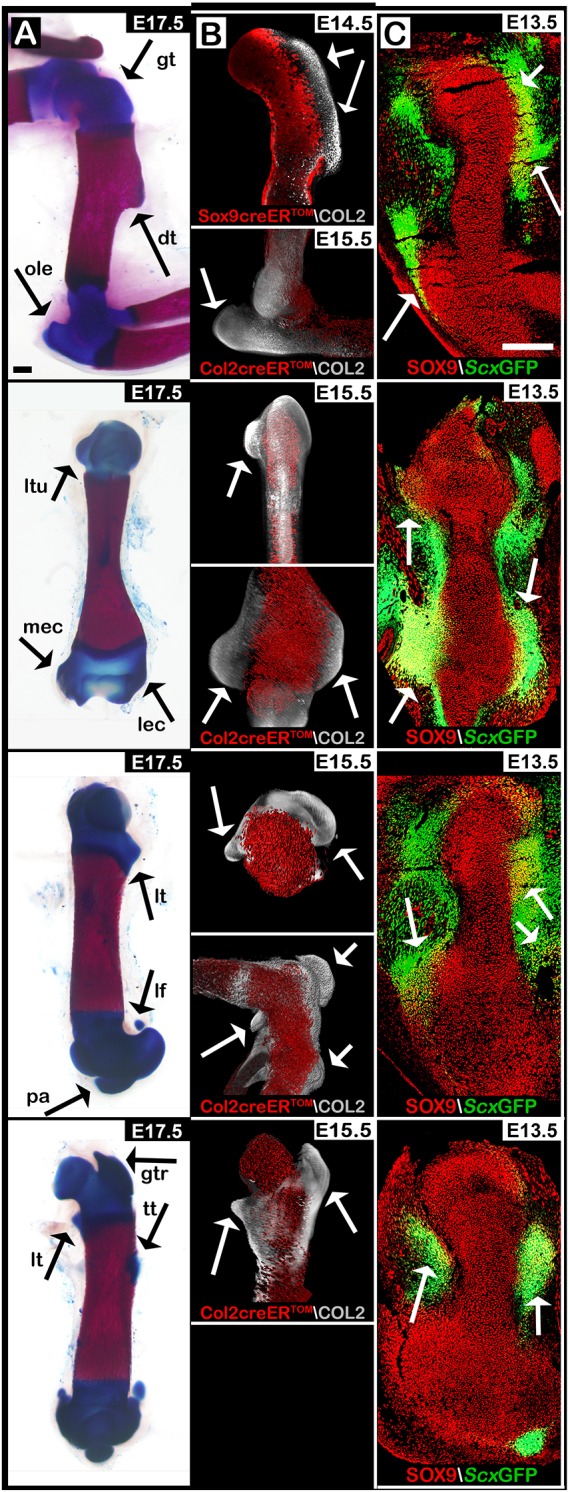Fig. 1.

Long bone morphology is affected extensively by numerous pools of Sox9+/Scx+ progenitors. Images showing sagittal and coronal views of the superstructures that form along the forelimb and hindlimb long bones. (A) Skeletal preparations of E17.5 wild-type limbs. Superstructures are indicated by black arrows. (B) Maximum intensity projection (MIP) images of E14.5 forelimb from Sox9-CreER-tdTomato transgenic embryos and E15.5 fore- and hindlimbs from Col2a1-CreER-tdTomato transgenic embryos. Whole-mount limbs were stained against COL2A1, imaged using light-sheet microscopy and reconstructed. Whereas first-wave Sox9+ progenitors were labeled by tdTomato, the secondary wave of Sox9+/Scx+ progenitors remained unstained. tdTomato− precursors contributed exclusively to superstructure formation (white arrows). (C) Sagittal and coronal sections through E13.5 fore- and hindlimbs from ScxGFP transgenic embryos stained against SOX9. SOX9 and Scx co-expressing cells are indicated by white arrows. Sagittal sections in first and third rows; coronal sections in second and fourth rows. dt, deltoid tuberosity; gt, greater tuberosity; gtr, greater trochanter; lec, lateral epicondyle; lf, lateral fabella; lt, lesser trochanter; ltu, lesser tuberosity; mec, medial epicondyle; ole, olecranon; pa, patella; tt, third trochanter. Scale bars: 200 µm.
